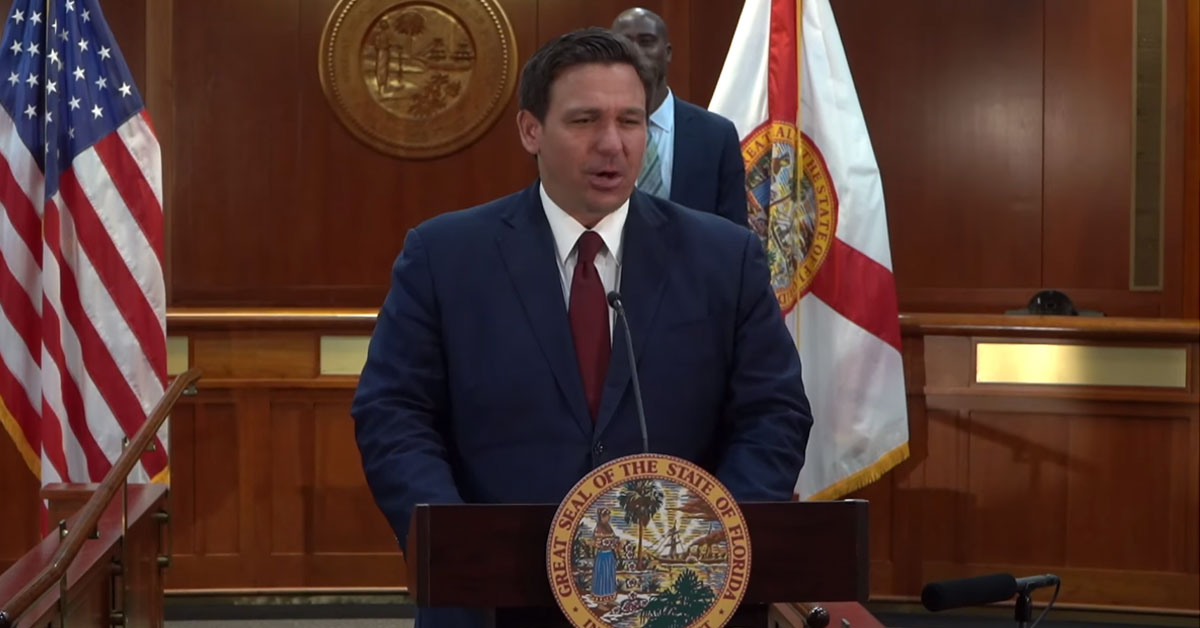On Tuesday, Governor DeSantis announced that the Florida Department of Health (DOH) issued a new rule that allows families to decide whether their healthy child should be taken out of school after an exposure to COVID. He was joined by State Surgeon General Joseph Ladapo and Education Commissioner Richard Corcoran.
According to a press release from the Governor’s office, Emergency Rule 64DER21-15 prevents:
- “Unnecessary” exclusion of healthy students from in-person schooling.
- Safeguards the rights of parents and legal guardians and their children.
- Provides health protocols for symptomatic or COVID-19 positive students.
- Provides opportunities for parents and legal guardians to choose which protocols to implement when their student has had direct contact with someone who tests positive for COVID-19.
It is effective as of Wednesday, September 22, 2021.
“Parents have the right to have their healthy kids in school,” said Governor Ron DeSantis. “In-person education is important for a students’ wellbeing, their educational advancement, and their social development. The idea that schools are somehow a big problem when it comes to spread of the virus has been refuted yet again. Not only is the forced quarantining of healthy children disruptive to a student’s education, but many folks in Florida are not able to work from home. With this rule, we are following a symptom-based approach to quarantining students in Florida.”
“The Governor and I share a similar vision of weighing the costs and benefits of public health policies – and our new rule today is an example of that,” said State Surgeon General Joseph Ladapo. “We must make sure that we are doing what is right for parents and for students.”
Ladapo says that “there’s not a single high-quality study that shows that any child has ever benefited from forced quarantining policies.”
“If you take the number of kids that had to quarantine, and added up the days they missed in school, in the education arena, we would call that a chronic absenteeism pandemic,” said Education Commissioner Richard Corcoran. “Now we have the data telling us that factually 98% of those children who quarantined never became symptomatic. That’s why the previous policy didn’t make any sense.”
The new DOH rule allows parents to decide if their healthy child should quarantine.
- Under the new rule, the only children required to quarantine are those that either test positive for COVID or who are symptomatic.
- Parents can choose to send their child to school as long as they remain asymptomatic.
For COVID-positive or symptomatic students, those students aren’t permitted to attend school, school-sponsored activities, or be on campus until one of the following is met:
- The student receives a negative diagnostic COVID-19 test and is asymptomatic.
- 10 days have passed since the onset of symptoms or positive test result, the student has had no fever for 24 hours, and the student’s other symptoms are improving.
- The student receives written permission to return to school from a medical doctor licensed under chapter 458, an osteopathic physician licensed under chapter 459, or an advanced registered nurse practitioner licensed under chapter 464.
What that means for Okaloosa County
In Okaloosa County, contact tracing will still occur following the identification of a positive COVID-19 case. However, the options for those students who are asymptomatic have changed as a result of the emergency rule.
“This new emergency rule gives parents the ability to keep their student in school if they have been contact-traced,” said Superintendent Marcus Chambers. “It is required of all school districts in Florida.”
Assistant Superintendent Steve Horton told Get The Coast that OCSD schools are contacting the parents of students who have been quarantined to make them aware of their ability to send their asymptomatic student back to school.
- “We will conduct wellness checks on these students each day,” said Horton. “If a student develops symptoms, they will be required to quarantine.”
The other safety protocols in the district will continue to be implemented.
“We look forward to working with parents and allowing them to make educational decisions for their students while keeping our existing safety protocols in place,” continued Chambers.
Staff members will also have the same ability to remain at work as long as they are asymptomatic.

